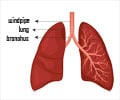According to an article, implementation of a bundle for prevention of ventilator-associated pneumonia (VAP) in critically ill infants and children may lead to lower rates of VAP in these patients.

The article, titled "Preventing Ventilator-Associated Pneumonia in Children: An Evidence-Based Protocol," assembles evidence-based practice recommendations and integrates pediatric-specific interventions with a proven adult model to propose new strategies bedside nurses can implement to prevent this important healthcare problem.
The bundled prevention protocol for support of infants and children receiving mechanical ventilation focuses on suctioning or airway clearance, ventilator circuit changes and oral care.
Researchers Virginia Cooper, RN, MS, and Catherine Haut, DNP, CPNP/AC, CCRN, developed the recommendations. Cooper practices as a nurse in the pediatric intensive and intermediate care units at the University of Maryland Medical Center, Baltimore. Haut is the program director of the acute care pediatric nurse practitioner program at the University of Maryland School of Nursing and practices as a pediatric nurse practitioner in the pediatric intensive care unit at Herman & Walter Samuelson Children's Hospital at Sinai, Baltimore.
"Critical care nurses play an important role in identification of risk factors and prevention of ventilator-associated pneumonia," Cooper said. "The care bundle we propose offers evidence-based alerts and consistent prevention strategies for providers caring for children in the pediatric intensive care unit."
The researchers also call for additional research to document the effectiveness of bedside protocols to prevent VAP in infants and children. Maintaining data collection over time with the use of the VAP bundle will supply critical information on the effectiveness of these nursing and respiratory interventions in changing the incidence of VAP in a particular setting.
Access the article abstract and full-text PDF by visiting the CCN website at www.ccnonline.org.
Advertisement













